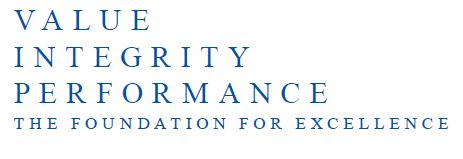April 8, 2025 |
|
| After a prolonged period of “U.S. exceptionalism”, European equity markets started the year with robust outperformance relative to the U.S. As of April 4, 2025, the STOXX 600 Index is down 2.2% year-to-date led by Germany’s DAX Index, which is up 3.7%. The S&P 500 Index is down 13.7% over the same period. Continued monetary easing, improved earnings momentum and Germany’s unprecedented fiscal packages are behind the recent revival in European equities. Conversely, the U.S. market volatility surged on the back of tariff fears and the unwinding of the big tech trade, resulting in underperformance. While challenges remain, we see several factors that should keep boosting sentiment towards European stocks. |
|
|
Germany’s Bold Spending Plan Sparks European Market RallyOne of the major drivers behind Europe’s recent outperformance is the momentous defense and infrastructure spending plan proposed by the new German government. This package, approved by both houses of parliament, allows defense spending above 1% of GDP to be exempted from the debt brake and offers greater borrowing flexibility at both federal and state levels.1 Morgan Stanley research estimates that defense spending could range between €720 billion and €985 billion depending on the speed of ramp-up and defense budget as a percentage of GDP.1 Additionally, the plan includes a clearly stated €500 billion for infrastructure spending over 12 years. In any case, the total spending envelope is much larger than the market expected. In response, Germany’s DAX Index has outperformed, bolstered particularly by aerospace & defense stocks. We believe this fiscal pivot marks a dramatic turn for Germany, a country traditionally focused on maintaining fiscal austerity. The move could become a game changer for not only Germany but also the broader European economy in the next 5 years and beyond, potentially boosting economic activities, capital expenditures, and regaining investor confidence in the continent. |
|
|
ECB’s Rate Cuts and Regulatory Delays Boost European Banking SectorMonetary policy in the Euro Area has also become more favourable. The European Central Bank (ECB) has reduced the policy rate from 4.5% to 2.65% in less than 12 months,2 while inflation has cooled and stabilized at 2.3% as of February.3 This has significantly encouraged credit growth. Bank lending to households and non-financial corporations shows promising signs of acceleration after recovery from a contraction in 2023, as shown in the chart below. Furthermore, there is growing advocacy for relaxing European bank capital rules. The European Commission has postponed the implementation of the Fundamental Review of the Trading Book (FRTB) to 2026 and may delay it even further.4 With regulatory headwinds delayed, the European lenders are expected to see less pressure on capital requirements and a positive impact on earnings. These should continue to serve as tailwinds for the European banking sector and broader business growth in Europe. |
|
|
Valuation Discounts Enhance Risk-Reward Profile for European EquitiesApart from fiscal and monetary optimism, valuations also support a better risk-reward profile for European equities. For the past decade, the valuation discount between Europe and U.S. equities has deepened on the back of robust U.S. earnings growth post the Great Financial Crisis. And the main driver behind this is the strong profitability of the U.S. Technology sector amidst an ultra-low-interest rate environment. However, recent developments suggest that earnings growth for U.S. mega-cap tech companies could moderate, potentially dragging index performance due to the sector’s dominant weight. The divergence in price/earnings-to-growth (PEG) ratios between the U.S. and Europe since 2024, as shown in the chart below, indicates that Europe looks particularly cheap even after recent multiple expansion. While extreme valuations alone are seldom the primary cause of significant market price shifts, they can magnify the speed of price moves when fundamentals shift.5 |
|
|
Allocating to European Equities Can Help Mitigate Concentration RiskThe bottom line is investors should construct a geographically and sector diversified portfolio to improve risk-adjusted returns, as concentration risks arise. But there is still a long way to go — overall investor holdings are still very concentrated in U.S. equities. For example, the U.S. accounts for almost 66% of the MSCI All Country World Index, and the U.S. equity market performance is largely governed by a few mega-cap tech stocks. Granted, European equities remain highly sensitive to global growth trends, which are not immune to a weakening of economic growth. An escalation of the trade war between the U.S. and Europe would inevitably overshadow the growth outlook for both. Moreover, President Trump campaigned on his prowess as a dealmaker to negotiate a peace deal between Russia and Ukraine. What’s happening in Europe shows that the continent has become more pragmatic with less red tape. With the growing need for diversification, we recommend investors increase their exposure to European equities. Brompton’s ApproachBrompton European Dividend Growth ETF (EDGF) invests in actively managed portfolio of large cap European dividend growth companies. These companies tend to be leaders in their respective segments. Their strong market positions allow them to remain resilient in times of uncertainty and their operational scale drives strong economics. EDGF offers attractive monthly distributions and employs an active covered call writing program to generate additional income and reduce overall portfolio volatility. |

Billy Huang
Senior Investment Analyst
Billy Huang specializes in equity selection and trading strategies with a focus on global materials, consumer staples and consumer discretionary sectors. Mr. Huang is a CFA Charterholder and is a member of the Toronto CFA Society. He received his Bachelor of Commerce degree from McGill University in 2015, majoring in Finance and minoring in Statistics.








